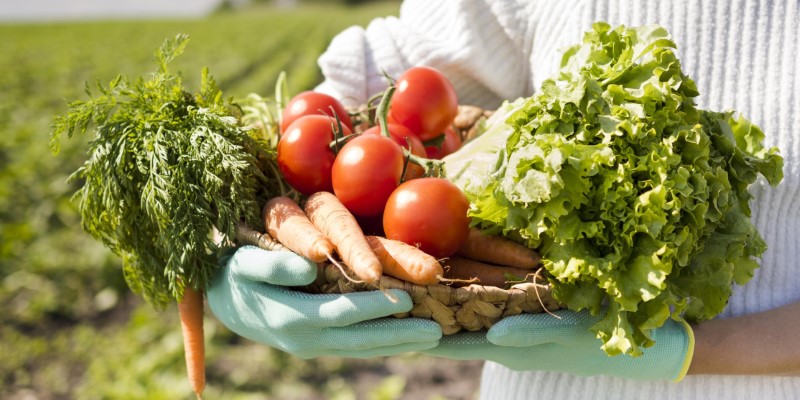How Hyper-Local Sourcing Is Influencing Restaurant Menus
Hyper-local sourcing has become more than just a buzzword in the restaurant industry; it is a movement reshaping how chefs create their menus and how diners experience food. By sourcing ingredients from nearby farms, community gardens, or even their backyard plots, restaurants are narrowing the distance between farm and fork. As this trend gains traction in 2024, it's influencing not only the flavors and creativity of dishes but also how restaurants operate and engage with their local communities.
What Is Hyper-Local Sourcing In The Restaurant Industry?
Hyper-local sourcing involves obtaining ingredients from very nearby, like on-site gardens or within a few miles. It prioritizes freshness, seasonality, and a deep connection to the location. As sustainability gains importance in 2024, more restaurants are embracing this approach to craft menus that reflect immediate, local availability.

Examples Of Hyper-Local Sourcing In Practice
Many innovative restaurants are integrating hyper-local sourcing into their culinary ethos. For example, restaurants like The Perennial in San Francisco and Blue Hill at Stone Barns in New York have led the way by creating dishes sourced almost entirely from their own gardens or local farming partners. These restaurants are not only reducing their environmental footprint but also offering diners a true taste of the immediate surroundings.
Impact Of Hyper-Local Sourcing On Menu Creativity And Diversity
The hyper-local sourcing trend has a direct impact on restaurant menu creativity and diversity. By focusing on what's available locally and seasonally, chefs are encouraged to think outside the box and experiment with ingredients that might not typically be on a standard menu. This shift towards local, seasonal produce often means rediscovering forgotten varieties of vegetables, herbs, and fruits that would never make it into mass-market supply chains.

Embracing Seasonality And Regionality
Hyper-local sourcing naturally aligns with the rhythms of the seasons. Menus change frequently to reflect what's in season, offering diners a dynamic experience throughout the year. In the summer, a menu might highlight heirloom tomatoes, fresh herbs, and berries, while in winter, it could bring root vegetables, preserved ingredients, and hearty greens. The result is an evolving menu that feels more alive and connected to the environment, often leading to dishes that are uniquely rooted in their specific location.
Culinary Innovation Through Constraints
While some might see the limitations of local sourcing as a challenge, many chefs view it as a creative opportunity. When access to ingredients is restricted by what’s available nearby, chefs are pushed to innovate. This often leads to new cooking techniques, inventive flavor combinations, and a deeper exploration of the ingredients at hand. For example, instead of importing exotic spices, a hyper-local approach might lead a chef to experiment with fermenting local produce or using wild herbs and flowers to add complexity and depth to a dish.

Benefits Of Hyper-Local Sourcing For Restaurants And Communities
The advantages of hyper-local sourcing extend beyond the plate. This approach fosters stronger relationships between restaurants and their local communities, contributing to both environmental and economic sustainability.
Strengthening Local Economies
By sourcing ingredients locally, restaurants directly support small farms, artisans, and producers within their community. This keeps money circulating within the local economy and helps preserve regional farming traditions and skills. As more consumers prioritize ethical and sustainable dining choices, restaurants that engage in hyper-local sourcing often gain a loyal customer base who appreciate both the quality of the food and the positive impact on the community.
Enhancing Ingredient Quality And Freshness
There’s no denying that fresher ingredients result in better-tasting dishes. Hyper-local sourcing minimizes the time between harvest and plate, ensuring that produce is at its peak flavor and nutritional value. This freshness not only enhances the dining experience but also allows chefs to focus on simpler, purer preparations that let the ingredients shine. The connection between freshness and flavor is one of the driving forces behind the growing popularity of hyper-local menus.

Environmental Sustainability
One of the primary motivations behind hyper-local sourcing is its environmental benefit. Shortening the supply chain reduces carbon emissions associated with transportation, packaging, and storage. Additionally, hyper-local sourcing often goes hand in hand with organic and regenerative farming practices, further contributing to the health of local ecosystems. For restaurants committed to sustainability, this approach offers a tangible way to lower their environmental impact while delivering a superior product.
Challenges And Considerations In Adopting Hyper-Local Sourcing
While hyper-local sourcing offers many benefits, it also presents certain challenges that restaurants must navigate to make this approach work effectively.

Consistency And Supply Chain Reliability
One of the biggest challenges is the inconsistency of supply. Local farms and gardens are subject to weather fluctuations, pests, and other unpredictable factors that can affect yield.
Restaurants that rely on hyper-local sourcing need to be flexible and adaptable, often requiring them to change menus at short notice or find creative substitutions when certain ingredients aren’t available. This level of variability can be difficult for some operations, particularly those that rely on a stable menu.
Cost And Resource Management
Hyper-local sourcing can also be more expensive than traditional supply chains, especially when working with small-scale producers who don’t benefit from economies of scale. The added cost of supporting artisanal and organic farms, combined with the labor-intensive nature of managing multiple small suppliers or maintaining an in-house garden, can strain a restaurant’s budget. However, many restaurants find that the investment is worthwhile due to the quality and uniqueness of the ingredients they receive.
Operational Complexity
Implementing hyper-local sourcing requires significant planning and coordination. Restaurants must establish strong relationships with local producers and, in some cases, invest in their growing operations. Managing a network of small suppliers can be logistically challenging, requiring careful scheduling and communication to ensure a consistent flow of ingredients. For restaurants operating at scale, this complexity can become a significant barrier.
Conclusion
Hyper-local sourcing is more than a trend; it’s a shift towards a more sustainable, community-focused approach to dining. By emphasizing freshness, seasonality, and regionality, hyper-local sourcing is transforming restaurant menus, encouraging creativity, and fostering stronger connections between diners, chefs, and local producers.
While the approach has its own set of challenges, the benefits for restaurants and their communities make it an increasingly attractive model. As more consumers seek authentic and environmentally responsible dining experiences, hyper-local sourcing is likely to continue shaping the culinary landscape well into the future.